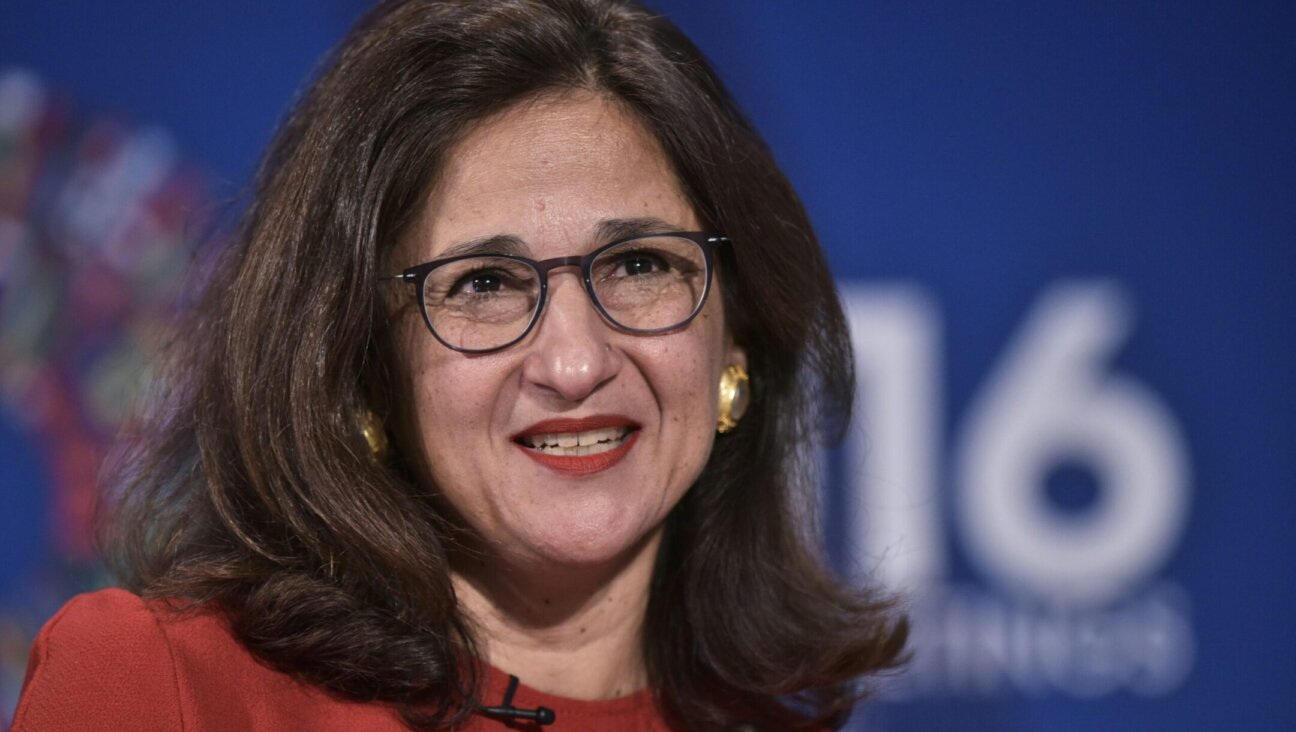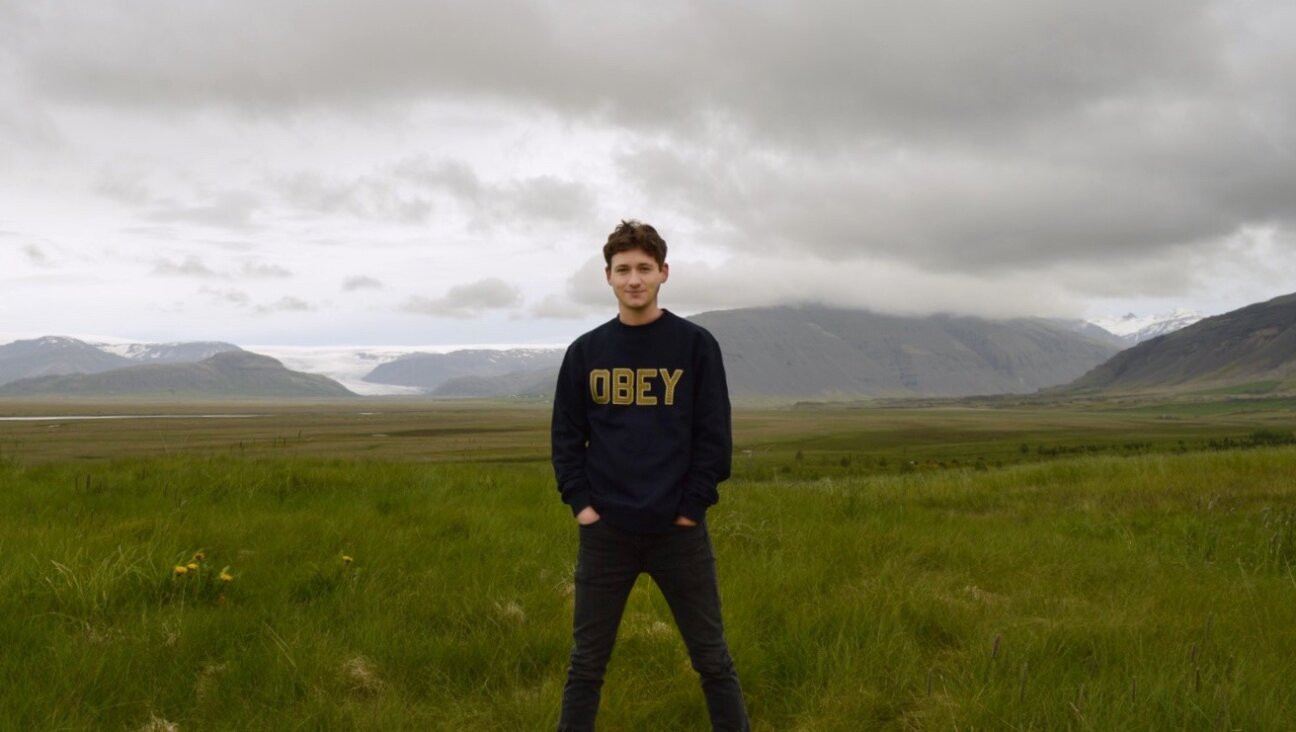From a Home in Southern Ohio, Genealogist Helps Lead Growing Movement
Sitting in his computer nook in Springfield, Ohio, far from the cultural power centers of New York and Los Angeles, Dan Kazez has been at the forefront of the fast-growing Jewish genealogy movement.
From there, over the past two years, Kazez has orchestrated the growth of a Web site that provides Jewish genealogists with hundreds of thousands of records from pre-Holocaust communities in Poland. Since he unveiled a new search engine late last year, his site has seen a quarter-million visitors.
Though Kazez, a music professor at Wittenberg University, has little contact with organized Jewish life, through his genealogical work he has connected with relatives he did not know existed, as well as with a broader world of Jews seeking their roots. “Eventually everyone wants back to go back to the home country,” said Kazez, founder of the Czestochowa-Radomsko Area Research Group.
Unlike almost any other area of Jewish life, the Internet has revolutionized and popularized genealogy.
In Israel, the first institute for Jewish genealogy was formed at the national library in Jerusalem earlier this year. In its précis, the new institute announced that “Jewish Genealogy has entered the mainstream of Jewish life and activity.” For the past two years, the most popular Jewish genealogical group on the Internet, JewishGen.org, has been registering 5,000 new members every month. A total of 205,000 people have handed over their e-mail addresses in order to have access to JewishGen’s portal.
“You innocently try to find out who your ancestors are. and it just keeps growing and growing, expanding your knowledge of history and Jewishness,” said Gary Mokotoff,editor of Avotaynu, a journal for Jewish genealogical research.
The burning core of this expanding culture was on display at the annual conference of Jewish genealogists this week, where 2,000 aficionados showed up at the Marriott Marquis in New York. The six-day event featured 280 programs, more than double the number of any past conference. At night there were films and klezmer music, and during the day a series of lectures covered a wide variety of topics, with titles like “When Harry Sued Sally: The Genealogical Benefits of Researching Civil Law Suits and Criminal Indictments and Unsealing Grand Jury Testimony.”
Groaning under the collection of legal documents and boat manifests, serious Jewish genealogists have to contend regularly with old stereotypes about the field. The family tree makers were generally the older cousins who otherwise would have been engaged with the collection of rare beer coasters or stamps.
Kazez, a wiry, closely shaven man, acknowledged that the work of genealogy requires a “bit of the obsessive compulsive. You’re on your safari, and you’re looking for the white tiger.”
For Jews with such inclinations, genealogy can provide an easy contact point with Jewish life that synagogues, with their relative disorder, might miss. Many of the founders of the major Jewish genealogical Web sites said that genealogy was their primary or only Jewish activity. Leah Beisl, who has been at it since 1979, said, “This, to me, takes the place of religion. I learn many Jewish things by attending conferences like this. I find my Jewish friends at these conferences.”
But the growth of the Internet also has expanded the pool of genealogists. One of these relative neophytes is Andrew Nusbaum, a 21-year old English major at Reed College in Portland, Ore. Nusbaum is currently writing a historical novel about the town of Czestochowa, based on research found on Kazez’s Web site.
Nusbaum first caught the genealogy bug when he was in his early teens, but when he went to a meeting of his local genealogical society he was put off by the advancing age of the members. It was through the Internet that his hobby took off. He is now a board member of Kazez’s group, but he never has been to a convention of any sort.
“Before the computer revolution, I tried to plan a trip to the national archives and they wouldn’t let me in,” Nusbaum said in a telephone interview. “The Internet and the greater accessibility have had an equalizing effect.”
New genealogical Web sites seem to appear by the week. At the conference this week, the Center for Jewish History’s Genealogical Institute was testing a beta version of its new search engine. One of the most popular sites on the Web is only two years old. Yad Vashem, the Israeli national Holocaust museum, put millions of records online in late 2004. Since then, the site has had 183 million page views.
It is the Holocaust and the many other ruptures in Jewish history that are pointed to as the source of the genealogical interest in the Jewish community. Michael Leclerc of the New England Historic Genealogical Society said he knows of no other ethnic group with as many avid genealogists.
“There aren’t, for example, any other ethnicities that have an entire major conference devoted just to their ethnicity,” Leclerc said. “They’re very active, and they’re very coordinated,” he said of the Jewish genealogists.
The Jewish background of these genealogists varies. At the conference there were men with sidelocks and women in jeans. The founder of JewishGen.com, Susan King, says that many of the people who come to her site are non-Jews looking for Jewish ancestors. Everyone, however, leaves with at least a peek into Jewish history and culture.
“It’s one of the few sites where you have Jews of all kinds talking and mingling for a common cause,” said King, who came to the conference from League City, Texas.
With such involvement, it was only a matter of time before the market responded. An Israeli company launched a new Web site earlier this year, MyHeritage.com, that allows people to use Yiddish and Hebrew letterings, and facial recognition software is in the works. The site already has 2.5 million subscribers.
In the not-for-profit realm, JewishGen.org, which originally was run by volunteers, now has five full-time employees. And Kazez has had a full-time researcher working in Poland for his site, collecting documents that volunteers then type into searchable form.
Among the newly available research on Kazez’s Web site are all the taxation, birth, death and Holocaust records from the Polish town of Plawno between 1850 and the 1940s.
“It was impossible,” Kazez said. “Now, a click of a button on a search engine and you have the impossible.”

I hope you appreciated this article. Before you go, I’d like to ask you to please support the Forward’s award-winning journalism this Passover.
In this age of misinformation, our work is needed like never before. We report on the news that matters most to American Jews, driven by truth, not ideology.
At a time when newsrooms are closing or cutting back, the Forward has removed its paywall. That means for the first time in our 126-year history, Forward journalism is free to everyone, everywhere. With an ongoing war, rising antisemitism, and a flood of disinformation that may affect the upcoming election, we believe that free and open access to Jewish journalism is imperative.
Readers like you make it all possible. Right now, we’re in the middle of our Passover Pledge Drive and we need 500 people to step up and make a gift to sustain our trustworthy, independent journalism.
Make a gift of any size and become a Forward member today. You’ll support our mission to tell the American Jewish story fully and fairly.
— Rachel Fishman Feddersen, Publisher and CEO
Join our mission to tell the Jewish story fully and fairly.
Our Goal: 500 gifts during our Passover Pledge Drive!






















